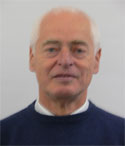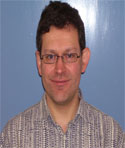Seminars
Wednesday 21 March 2007
(PP1, People's Palace)
Programme:
- 5-5.20pm "X-ray imaging" By Professor James Elliott - Deputy Director/Professor of Biophysics in Relation to Dentistry
- 5.20-5.30pm Discussion
- 5.30-5.50pm "Statistics on the Bridge: Experiences at the Interface of Life Sciences and Engineering". By Professor Steven G Gilmour- Professor of Statistics Director of Probability and Statistics
- 5.50-6pm Discussion
- 6-7pm Refreshments in the People Palace Foyer
Speakers:
 Professor James Elliott
Professor James Elliott
Deputy Director/Professor of Biophysics in Relation to Dentistry
Jim Elliott is Professor of Dental Biophysics in the Institute of Dentistry, but based on the second floor of the Francis Bancroft Building on the Mile End Campus. He is interested in the development of novel X-ray microscopes and their application to the study of bones, teeth and engineering materials. He also researches on the physical chemical processes in dental caries and the crystal chemistry of the calcium phosphates using IR spectroscopy, X-ray diffraction and chemical methods.
email contact: j.c.elliott@qmul.ac.uk
 Professor Steven G Gilmour
Professor Steven G Gilmour
Professor of Statistics Director of Probability and Statistics
[Please note that all links open in a new window]
Professor Steven G. Gilmour is the Professor of Statistics in the School of Mathematical Sciences and the new cross-faculty Centre for Statistics. He has obtained a BSc in Statistics from Heriot-Watt University in 1987 and a PhD in Applied Statistics from the University of Reading in 1991. From 1990-99 he was a Lecturer in the Department of Applied Statistics at the University of Reading, and was a Visiting Fellow in the Department of Statistics, University of Wisconsin-Madison in 1998. He came to Queen Mary in January 2000 as a Reader in Statistics and was promoted to a personal chair in 2004. His research interests are in the design and analysis of experiments, particularly experiments with complex treatment structures. This includes treatments which are combinations of several factors, treatments which are levels of a continuous factor and treatments which are combinations of levels of several continuous factors (response surface experimentation).
email contact: s.g.gilmour@qmul.ac.uk







